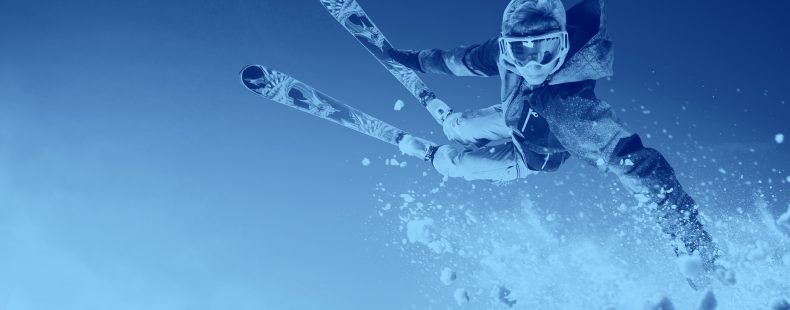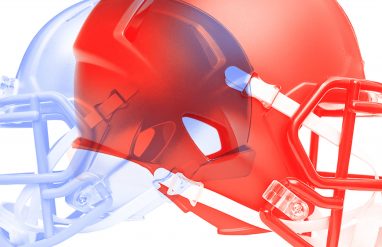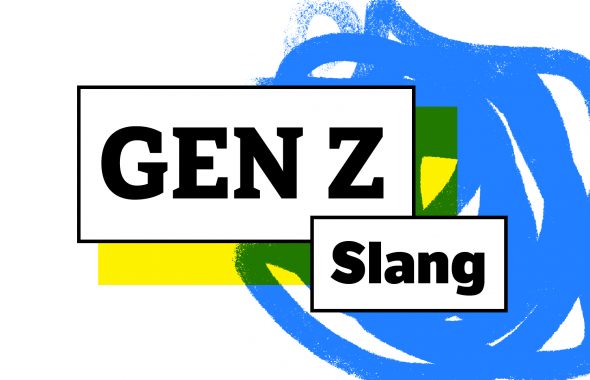While there’s an undeniable draw to outdoor activities in the summer sunshine, winter brings its own set of beloved sports. And some of the most popular around the world, of course, are featured in the Winter Olympics every four years. In 2022, some of the world’s best winter athletes showcased their skills in skating, skiing, sledding, and snowboarding competitions in Beijing. Whether you’re a regular on the slopes or just enjoy watching people break records and complete flips, brush up on your winter sports vocabulary.
Alpine
Olympic Alpine skiing, sometimes called downhill skiing, is a set of races that are some of the fastest events on two skis. The goal is simple: get down the mountain course as quick as possible. The form gets its name from Europe’s largest and tallest mountain range, the Alps. Racers can reach nearly 100 miles per hour on the long and winding downhill courses.
Alpine skiing for both men and women debuted during the 1936 Olympic games in Garmisch-Partenkirchen, Germany, with a race that combined downhill and slalom (more on that later). Today, the Olympics have 11 Alpine events in which racers try to earn the best time.
slalom
Speeding down a hill on skis is one challenge. Doing so on a zigging and zagging course is something else entirely. The slalom is one of the Alpine skiing races. Each skier aims to pass through a series of two poles, called gates, that are between 13 and 19 feet apart. Whichever skier has the lowest combined time over two courses wins. The name comes from the Norwegian slalåm, which means “sloping track.”
The slalom was part of the combined Alpine skiing event in the 1936 Olympics in Garmisch-Partenkirchen and has been a standalone event since the 1948 games in St. Mortiz, Switzerland. Slalom today has the shortest course and fastest turns, and the vertical descent on the course ranges between about 600–720 feet for men and 450–600 feet for women on the standalone events. These are, from longest to shortest:
- the super-G
- giant slalom
- slalom
cross-country skiing
Whereas Alpine puts speed at the forefront, cross-country skiing highlights endurance. The sport consists of skiing through varying, but relatively flat, terrain on narrow skis with bindings that allow the heel on ski boots to rise. Cross-country is considered the oldest type of skiing—one that was originally designed for getting from point A to point B rather than for competition.
⛷Cross-country skiing events
Cross-country was part of the first Winter Olympic games in Chamonix, France in 1924. What started as just a men’s 50km and 18km race has expanded to 12 total events.
The women’s races:
- sprint
- team sprint
- 10km individual start
- 7.5km + 7.5km skiathlon
- 30km mass start
- 4x5km relay
The men’s races:
- sprint
- team sprint
- 15km individual start
- 15km + 15km skiathlon
- 50km mass start
- 4x10km relay
Depending on the event, skiers have to race using the side-to-side skiing freestyle technique or the forward-striding classic technique.
biathlon
If you take cross-country and add in sharpshooting, you get the biathlon. This word comes from Greek and means an athletic contest of two consecutive events. Rifle hunting on skis was long a part of life in Scandinavia. The sport started when the Norwegian military held the first modern biathlon in 1912.
The first modern Olympic biathlon came during the 1960 games in Olympic Valley, California (the women’s event came later, in 1992). Now there are 11 events:
- mixed relay
- women’s 15km individual
- women’s 7.5km sprint
- women’s 10km pursuit
- women’s 4x6km relay
- women’s 12.5km mass start
- men’s 20km individual
- men’s 10km spring
- men’s 12.5km pursuit
- men’s 4×7.5km relay
- men’s 15km mass start
The races are time-based, and missing a shooting target adds to the racer’s final time—except for the pursuit races. In those, the leaders from the individual events get a head start on the race, and their competitors are able to start based on their previous race times.
Nordic
The Nordic combined puts together ski jumping and cross-country skiing. The name, as you might assume, comes from Norway, where skis have been used for hunting and daily life for thousands of years (ski is related to the Old Norse skið, meaning “stick of wood”). As a sport, the Nordic combined got its start at the Holmenkollen ski festival in Olso, Norway, in 1892.
The Nordic combined is one of the Winter Olympics originals, having started at the first Winter Olympics in Chamonix, France, in 1924 and held every Olympics since. These days, there’s still only an Olympic men’s competition with three events that feature both a ski jump and cross-country skiing race.
bobsleigh
The bobsleigh is an Olympic event named after the sport’s defining piece of equipment: the bobsleigh (or, in the US and Canada, the bobsled). The bob in bobsleigh refers to the motion of its riders, as the verb means “to move (a thing) up or down with a bob or slight jerk.” And that’s an apt description, as bobsledding involves two or more people on a sledge (the British term for a sled) that is made up of two short connected sleds with a steering mechanism and brake. The team maneuvers fast—around 90 mph—down a banked, icy run, and the fastest time wins. The sport was invented by the Swiss in the late 1800s when skeleton sleds, essentially just flat boards on long metal blades, were decked out with a way to steer and a chassis for protection.
Bobsleigh made an appearance in the first Winter Olympics in Chamonix in 1924. It’s been in every Winter Olympics except for one since then. The Olympics now has a:
- two-person race for men
- two-person race for women
- four-person men’s race
- monobob for women with just one rider
Feel the rhythm, feel the rhyme of these cool words for winter time.
luge
The luge event is similar to the bobsleigh (luge is French for sledge). In fact, the luge, bobsleigh, and skeleton all use the same track. Differences can be found in the sleds and how they’re used. Luges are for one or two people. The sled itself is like a stripped down bobsleigh that lacks the protective sides and, crucially, brakes. To turn, lugers shift their weight, primarily through their calves on the sled’s runners. Just like the bobsleigh, people ride a luge laying on their back with feet forward and can reach speeds about 85 mph. Luge tracks were first built by Swiss hotel owners for tourists in the 1800s, with the first international course opening in Davos, Switzerland, in 1883.
Luge made it to the Olympics in 1964 when they were held in Innsbruck, Austria, and the races have been held on the bobsleigh track since 1976. Today, the sport includes:
- men’s singles
- men’s doubles
- women’s single
- and team relay events
skeleton
The Olympic skeleton race uses the same track as the bobsleigh and luge, but two major differences make the event immediately stand out: the sled is slightly altered, and racers fly down the track head-first. It’s name is believed to have come from the fact that when the all-metal sleds were first used on the bobsleigh run in Davos in 1892, people thought they looked like skeletons. It also might get its name from the Anglicized Norwegian word for sled, kjaelke.
Skeleton made its Olympic debut at the 1928 games in St. Moritz, Switzerland, and weren’t included again until the Winter Olympics again returned to St. Moritz in 1948. It’s become a regular event since the 2002 Salt Lake City games, however. The Olympics features a men’s singles skeleton event and a women’s singles. Athletes start by running and then jumping onto their sled head-first, as opposed to the seated start position in bobsleigh and luge. Skeleton racers can go more than 80 mph.
curling
Curling is all about precision. The game involves two teams of four players who slide curling stones in the direction of a circular target (the tee) on the opposite side of the court. The stone is helped along by team members who sweep the ice with a broom or brush to make the rock go faster as it travels more than 145 feet to the other side of the rink. The stones make a loud noise as they slide across the ice, which often has tiny ice bumps on the surface for better control. That’s where the game’s nickname, “the roaring game,” comes from. The word curling was first recorded in 1610–20. Today, the game’s “stones” aren’t your everyday stone but are instead a 42-pound piece of polished granite from Scotland’s Ailsa Craig with a handle attached to the top.
toe loop
Figure skating is one of the most popular sports in the Winter Olympics, and for many, the marquee event of the season. The name of the event refers to the patterns (or figures) skaters traced on the ice during competition. This skill was dropped from competition in the 1990s, but of course, the name remains.
Another skill figure skaters must master is the toe loop, a common toe jump where the skater uses the toe pick (the serrated portion of the skate blade at the toe of the foot) to leap into the air. A skater doing a toe loop jumps off using the one toe pick while the other skate’s on the ice. The skater does a full rotation, and then lands on the outside edge of the same foot that was planted before. This is considered one of the easiest jumps in the sport. It’s similar to the Lutz with the critical difference being that the toe loop ends on the same foot the skater jumps from, while the Lutz lands on the opposite.
Figure skating is a special case among Winter Olympic sports. The first Winter Olympics were held in 1924, but the 1908 London games spanned from April until October and included some winter events—figure skating included. Figure skating again made an appearance in the general games in 1920 in Antwerp before figure skating events were held at the first Winter Olympics in 1924. Today, figure skating consists of men’s, women’s, and pairs events, as well as ice dancing, which was added in 1976.
Salchow
In figure skating, as in gymnastics, tricks are often named after the person who first completed it. That’s the case for the Salchow, which is when a skater jumps from the back inside edge of one skate, makes a full body rotation, and then lands on the back outside edge of the other skate. It’s named after the Swedish figure skater Ulrich Salchow (1877–1949). It’s not the only figure skating trick that takes its name from an athlete, of course. The Axel, a one-and-a-half rotation forward jump, is named after Axel Paulsen, for example. Both the Salchow and Axel are edge jumps, which means the skater takes off from the edge of the skate blade.
Lutz
The Lutz is another jump named after the athlete to first complete the move. It involves the skater leaping from the back outer edge of one skate, making a full rotation in the air, and landing on the back outer edge of the opposite skate. The Austrian figure skater Alois Lutz first performed the jump in 1913. The move is in the family of toe jumps, in which the skater digs the toe pick into the ice to jump or pivot. It has one of the highest difficulty ratings of toe pick moves. In addition to the standard, one-rotation Lutz, there’s the double and triple Lutz, which require adding one or two more rotations in the air.
Take the quiz!
Do you feel comfortable with these terms now? You might not be ready to compete in one of these sports, but you can train your vocabulary skills using our Winter Sports Word List which features flashcards, practice quizzes, and more. Then you can go for gold on our quiz on these winter sports.














